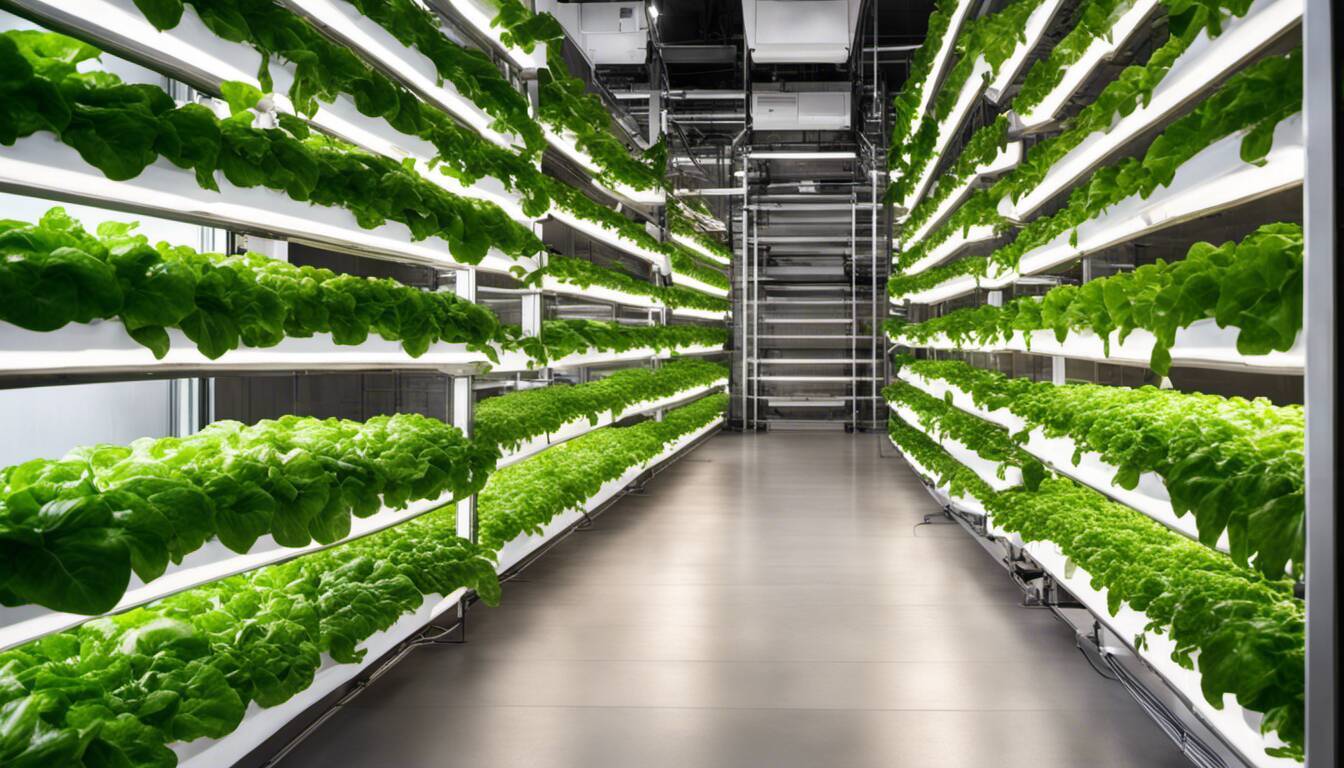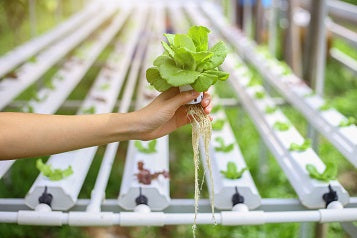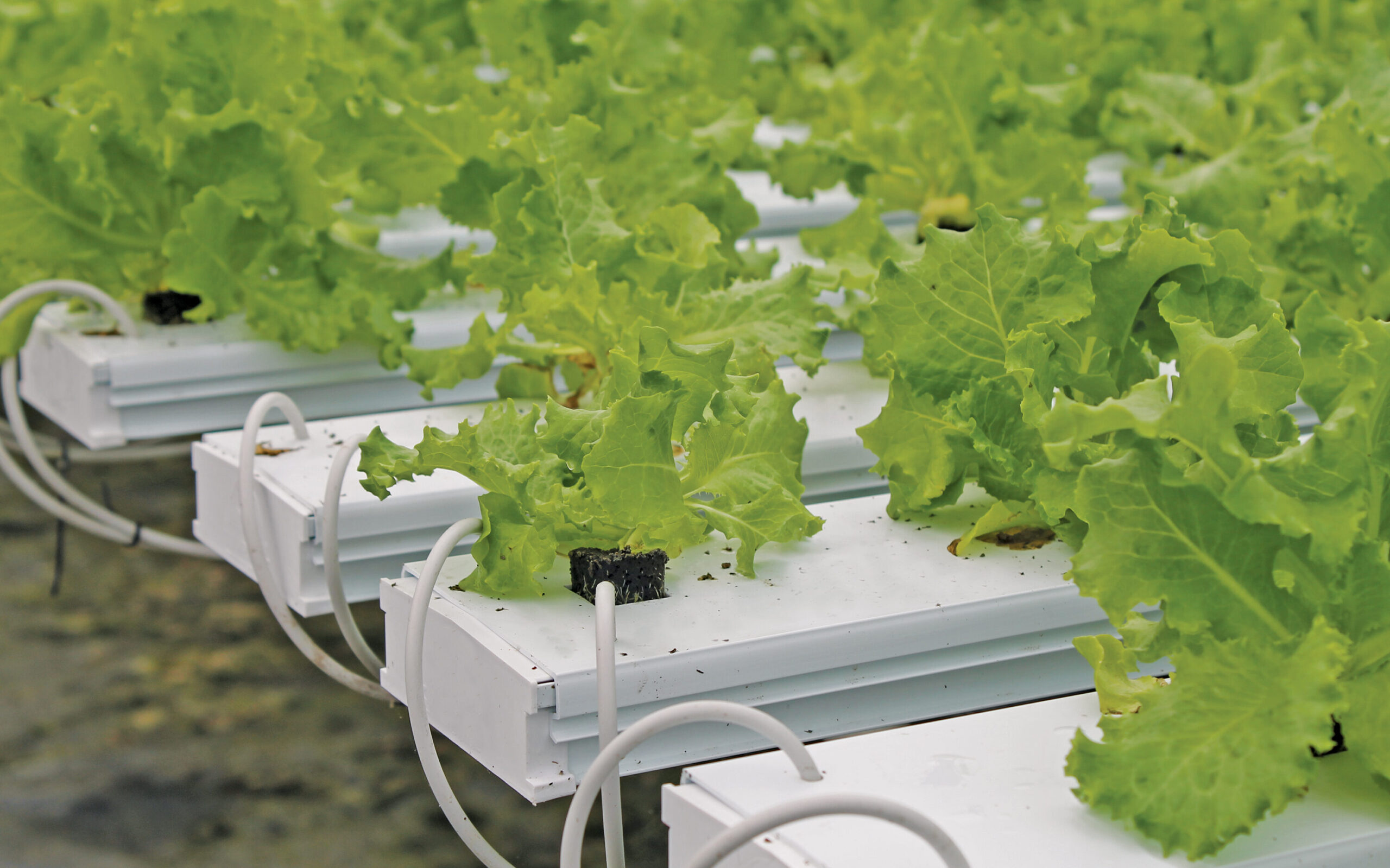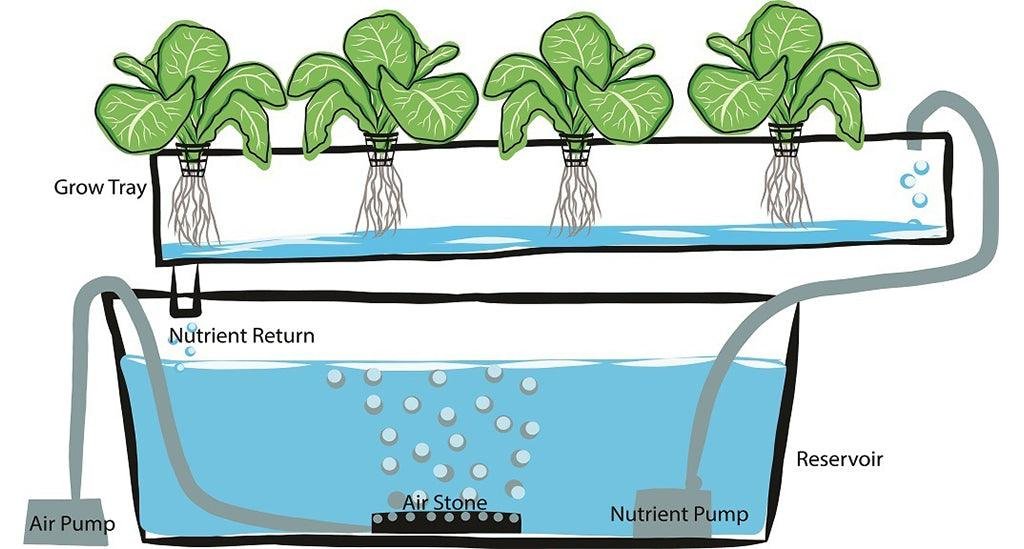A hydroponics system grows plants without soil. It uses water and nutrients instead.
This method is gaining popularity among gardeners. Why? Because it saves space and water. Plus, plants often grow faster and healthier. Hydroponics is an innovative way to garden. It allows you to control the environment. This means fewer pests and diseases.
Also, it can be set up indoors or outdoors. You don’t need a large garden or farm. Small spaces work just fine. Many people enjoy experimenting with different setups. They find it rewarding and fun. The system suits beginners and experts alike. Whether you want to grow vegetables or herbs, hydroponics offers flexibility. It’s a sustainable option. With the right guidance, anyone can start. Dive into the world of hydroponics. Discover its benefits and potential.
Introduction To Hydroponics
Hydroponics systems allow plants to grow without soil. They use nutrient-rich water solutions. This method saves space and water. Perfect for growing vegetables and herbs indoors.
### Introduction to Hydroponics Ever wondered how you can grow fresh vegetables without soil? Hydroponics offers an exciting way to cultivate plants using water mixed with nutrients. This method is not only efficient but also space-saving, making it a popular choice for urban gardeners. ### What is Hydroponics? Hydroponics is a method of growing plants without soil. Instead, plants thrive in a nutrient-rich water solution. This system allows for precise control over the plant’s environment. You might picture lush green leaves sprouting from a simple framework of pipes. This setup is more than just visually appealing; it’s a practical solution for those with limited outdoor space. ### Benefits of Hydroponic Gardening One of the most significant advantages of hydroponic gardening is the faster growth rate. Plants can grow up to 50% faster in hydroponic systems compared to traditional soil gardening. This is because they have direct access to nutrients. Moreover, hydroponics uses less water. You can save up to 90% more water than conventional gardening. Imagine the impact this could have on your water bill. Think about the convenience of growing fresh produce year-round. With hydroponics, you’re not bound by the seasons. You can enjoy homegrown tomatoes even in the middle of winter. Have you ever considered the quality of the produce you buy? Hydroponic systems reduce the need for pesticides, resulting in cleaner, healthier food. Plus, you get to enjoy the satisfaction of knowing exactly how your food was grown. So, are you ready to start your hydroponic journey?Types Of Hydroponic Systems
Hydroponic systems offer various methods for growing plants without soil. Each type has unique features and benefits. Understanding these systems can help you choose the right one for your garden. Let’s explore two popular types of hydroponic systems.
Wick System
The wick system is the simplest hydroponic method. It uses a wick to supply nutrients to plants. The wick draws water from a reservoir to the plant roots. This system doesn’t need pumps or electricity. It’s perfect for beginners and small plants.
Deep Water Culture
Deep Water Culture, often called DWC, involves suspending plant roots in nutrient-rich water. An air pump supplies oxygen to the water. This ensures plant roots stay healthy and well-fed. DWC is great for fast-growing plants. It requires regular monitoring of water levels and nutrients.
Setting Up A Hydroponic Garden
Hydroponics systems allow plants to grow without soil, using water and nutrients. These gardens need careful setup to ensure optimal growth. Select appropriate containers and nutrient solutions to nourish plants effectively.
Setting up a hydroponic garden might seem like a challenge, but it’s easier than you think. Whether you have a green thumb or are just starting out, hydroponics can be a rewarding way to grow plants. You don’t need a sprawling backyard to get started; a small space can be transformed into a thriving garden.Essential Equipment
To begin your hydroponic journey, gather some basic equipment. You’ll need containers to hold your plants, a nutrient solution, and a pump to circulate water. LED grow lights are critical for providing the right light spectrum for plant growth. Don’t forget about timers to automate lighting and watering schedules. This ensures your plants get consistent care even when you’re busy. I remember setting up my first system with just a few buckets and an inexpensive pump. Seeing my plants thrive was worth every effort.Choosing The Right Plants
Selecting the right plants is crucial for success. Leafy greens like lettuce and spinach grow quickly and are perfect for beginners. Herbs such as basil and mint are also excellent choices, adding fresh flavors to your dishes. Consider what you enjoy eating and the space you have. Do you love fresh salads or homemade pesto? Tailor your garden to your culinary preferences. It’s amazing how you can grow your own ingredients right at home. Watching my basil grow was like having a mini garden of flavors ready for my kitchen. Setting up a hydroponic garden invites you to explore new ways of growing your own food. With the right equipment and plant choices, you can create a flourishing garden that fits your lifestyle. What will you grow in your hydroponic haven?
Credit: grow-it-led.com
Nutrient Solutions And Plant Growth
Hydroponics offers a unique way to grow plants without soil. Instead, plants receive essential nutrients directly through water. This method ensures efficient nutrient uptake and healthy plant growth. Understanding nutrient solutions is crucial for any successful hydroponic system.
Importance Of Nutrients
Nutrients play a vital role in plant growth. They act as the building blocks for plant development. Each nutrient supports different functions within the plant. Nitrogen helps in leaf growth. Phosphorus strengthens roots and flowers. Potassium enhances overall plant health. Without these nutrients, plants cannot thrive.
In hydroponics, the nutrient solution replaces soil nutrients. It ensures plants receive all they need. A balanced nutrient solution promotes faster and healthier growth. This leads to higher yields and better crop quality.
Preparing Nutrient Solutions
Preparing nutrient solutions requires precision. Begin by selecting a suitable hydroponic nutrient mix. These mixes contain essential macro and micronutrients. Follow the instructions on the package carefully. Mix the nutrients with water in the correct ratio.
Regularly check the pH level of the solution. The ideal pH range is between 5.5 and 6.5. This ensures optimal nutrient absorption. Use a pH meter to measure and adjust as needed. Monitor the electrical conductivity (EC) as well. It indicates the nutrient concentration. Adjust the nutrient levels based on plant needs and growth stage.
Store the nutrient solution in a cool, dark place. This prevents nutrient degradation. Change the solution regularly to maintain freshness. Always ensure the solution is well-aerated. This provides oxygen to the plant roots.
Lighting And Environmental Control
Lighting and environmental control are crucial in hydroponics systems. These elements ensure optimal plant growth and yield. Proper lighting mimics sunlight, providing energy for photosynthesis. Environmental control maintains the right temperature and humidity. This balance fosters healthy plant development and minimizes stress. Let’s explore key aspects of lighting and environmental control.
Led Lighting Options
LED lights are popular in hydroponics for their efficiency. They consume less energy and produce less heat. This reduces electricity costs and prevents heat stress on plants. LED lights come in various spectrums. Blue light promotes vegetative growth, while red light enhances flowering. Many growers use adjustable spectrum LEDs. This flexibility allows for tailored light conditions throughout growth stages.
Temperature And Humidity Management
Temperature control is vital for plant health. Most plants thrive between 65-75°F (18-24°C). Consistent temperature prevents growth issues and diseases. Using fans and heaters can maintain the desired range.
Humidity also affects plant growth. High humidity encourages mold and mildew. Low humidity causes plants to dry out. Aim for 40-60% humidity for most plants. Humidifiers and dehumidifiers help achieve this balance. Monitoring devices alert you to any changes. Proper management ensures a thriving hydroponics system.

Credit: www.freshwatersystems.com
Maintenance And Troubleshooting
Regular checks keep your hydroponics system running smoothly. Identify nutrient imbalances early to prevent plant issues. Clean equipment and monitor pH levels to ensure optimal growth.
Maintaining a hydroponics system requires regular attention and a keen eye for detail. It’s not just about growing plants without soil; it’s about ensuring your system runs smoothly and efficiently. Just like a car needs regular check-ups, your hydroponics system demands consistent care to prevent problems before they start. Whether you’re a seasoned hydroponic gardener or a newbie, understanding maintenance and troubleshooting can make or break your plant-growing success.Regular System Checks
Regular checks are vital in keeping your hydroponics system healthy. Start by inspecting the water pumps and filters weekly. Clean any debris or blockages to ensure water flows smoothly. Check nutrient levels frequently. A simple test can reveal if your plants are getting the right mix. Adjust as needed to keep them thriving. Monitor the pH levels of the water. A pH meter can help you maintain the perfect balance, crucial for nutrient absorption. Aim for a pH between 5.5 and 6.5.Common Issues And Solutions
Every hydroponics gardener faces challenges. One common issue is algae growth. This can clog your system and harm plants. Cover exposed water surfaces to minimize light exposure. Nutrient deficiencies are another hurdle. Yellow leaves or stunted growth often indicate a lack of essential nutrients. Adjust your nutrient mix and observe changes within a few days. Waterborne pests can wreak havoc. If you notice pests, act quickly. Use organic treatments and remove affected plants to prevent spread. Regular maintenance can prevent these issues, but what if problems persist? Have you considered asking other gardeners for advice or joining forums to share experiences? Sometimes, the best insights come from those who’ve faced similar challenges.Urban Gardening Benefits
Hydroponics systems offer a clean and efficient way to grow plants in urban spaces. They require less water and soil, making them ideal for city environments. Urban gardeners can enjoy fresh produce year-round with minimal space and resources.
Urban gardening is transforming city life. Hydroponics systems play a key role. They help people grow plants without soil. This method offers many benefits for urban dwellers. Explore why many city residents are turning to hydroponics for their green needs.Space Efficiency
Hydroponics maximizes space use in small areas. City apartments often lack gardens. Hydroponics allows vertical planting. You can grow plants on walls or shelves. This method increases plant yield without needing extra space. Urban areas have limited land. Hydroponics solves this problem by using vertical space efficiently.Sustainable Practices
Hydroponics supports eco-friendly gardening. It uses less water than soil gardening. This system recycles water in a closed loop. Nutrients are delivered directly to plant roots. This reduces waste and runoff. Hydroponics also lessens the need for pesticides. Urban gardeners contribute to a cleaner environment. Sustainable gardening practices help preserve nature. Urban gardening with hydroponics offers numerous benefits. It is ideal for city living. Embrace this method for a greener future.
Credit: www.growspan.com
Future Of Hydroponics In Urban Areas
Imagine walking through a bustling urban area and finding lush greenery growing in unexpected places. The future of hydroponics in urban areas holds this promise. Hydroponics, a soil-less plant growing method, is reshaping city landscapes and offers exciting possibilities for fresh food production. As urban spaces become denser, hydroponics presents a sustainable solution for growing plants in limited spaces, bringing nature back into cities.
Technological Advances
Technology is propelling hydroponics into new heights. Innovations like automated systems and smart sensors are making hydroponic farming more efficient and user-friendly. Picture a rooftop garden equipped with sensors that adjust nutrient levels and watering schedules based on plant needs.
These advances reduce human error and optimize growth conditions. As technology evolves, you might find hydroponic systems with AI capabilities that predict harvest cycles and market trends. This tech-savvy approach could democratize farming, making it accessible to urban dwellers with limited agricultural knowledge.
Community Impact
Hydroponics has the potential to unite communities. It encourages collaboration and shared responsibility, fostering a sense of belonging. Think about a community garden where neighbors collectively tend to hydroponic plants, sharing the harvest.
Such initiatives can improve food security and reduce dependency on imported produce. Imagine hosting a community event where you discuss hydroponic techniques and share fresh vegetables grown together. Hydroponics not only feeds bodies but also nurtures connections among city dwellers.
What role can you play in integrating hydroponics into urban spaces? Whether it’s supporting local initiatives or starting your own small-scale system, the future of hydroponics in urban areas is bright and promising. Embrace the opportunity to be part of this green revolution.
Frequently Asked Questions
What Are The 5 Disadvantages Of Hydroponics?
Hydroponics can be expensive due to setup costs. It requires constant monitoring of nutrient levels. The system is vulnerable to power outages. Diseases can spread quickly in water systems. Limited crop variety can be a challenge.
What Are The 3 Types Of Hydroponic Systems?
The three types of hydroponic systems are nutrient film technique (NFT), deep water culture (DWC), and aeroponics. NFT circulates nutrient-rich water over plant roots. DWC submerges roots in nutrient solutions. Aeroponics mists roots with nutrients in air. These methods optimize plant growth without soil.
Are Indoor Hydroponic Systems Worth It?
Indoor hydroponic systems are worth it for fresh produce year-round. They save space, reduce pests, and conserve water. Initial setup costs may be high, but they offer long-term benefits. Ideal for urban gardeners, they provide healthy, pesticide-free food. Enjoy controlled environments and faster growth rates with hydroponics.
What Is The Main Problem In Hydroponics?
The main problem in hydroponics is nutrient imbalance. Properly managing pH and nutrient levels is crucial. Incorrect levels can hinder plant growth. Regular monitoring and adjustments are essential to ensure healthy plants.
Conclusion
Hydroponics offers a fresh approach to gardening. It saves water and space. Plants grow faster without soil. You enjoy fresh produce at home. It’s ideal for urban areas with limited space. No messy soil means cleaner gardening. Start small, experiment, and watch your plants thrive.
Many people find it rewarding. It’s a chance to learn and innovate. With hydroponics, you can grow year-round. This method is eco-friendly and efficient. A great way to connect with nature indoors. Try hydroponics and see the benefits yourself. Simplify gardening and enjoy the harvest.





